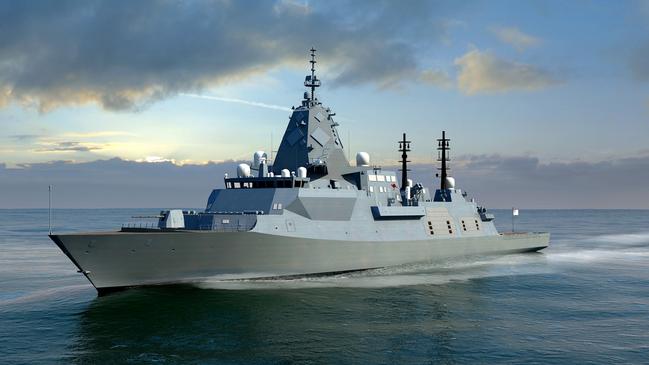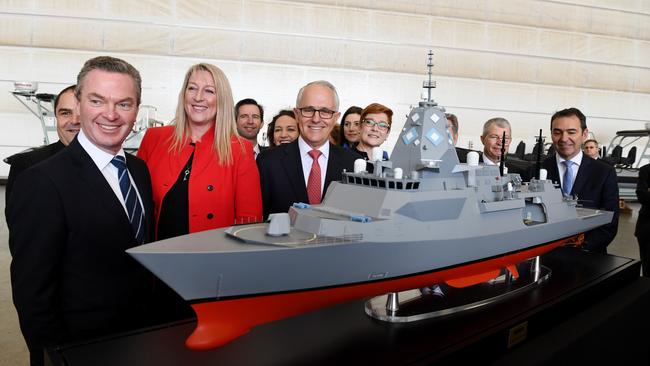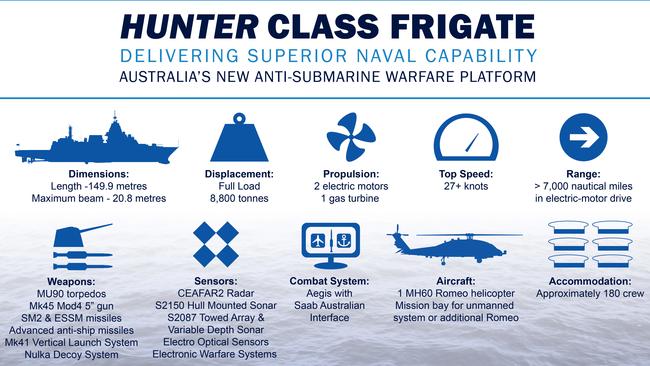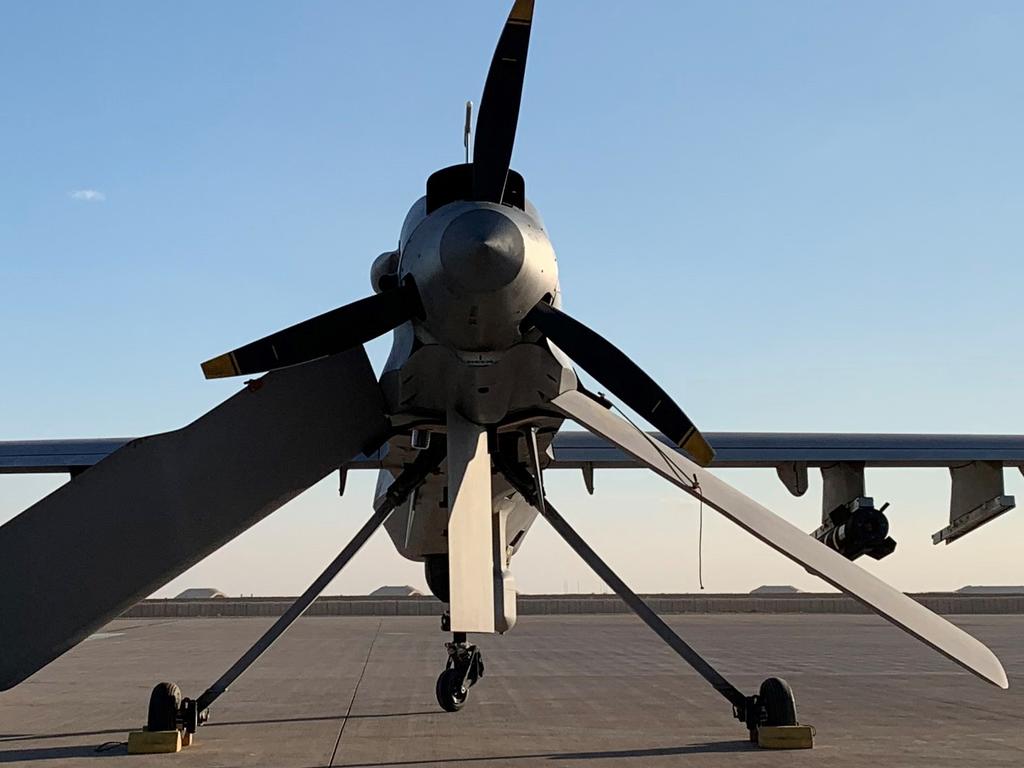
The ALP’s shadow defence minister Richard Marles has had the courage to say the frigate contract will be reviewed.
Peter Dutton no doubt understands the potential disaster, but so far remains mute.
The war in Ukraine has confirmed what the US has been telling Australia for some time – future wars will be missile to missile games.
The devastation of the Russian tanks, the sinking of the Moskva and the Russians missile attacks on Ukraine are illustrations of modern warfare.
Neither Marles nor Dutton will find reversing the frigate disaster easy because, almost certainly, it was indirectly part of the UK free trade negotiations.
Key defence decisions are too important to be mixed up in trade negotiations.
In explaining the technology behind the frigate disaster, I am indebted to the material assembled by a former chief engineer to the fleet commander of the Royal Australian Navy, Paul Greenfield, and Jon Stanford, a former senior official in the Department of the Prime Minister and Cabinet, writing in the Strategist publication.

When defence officials began the task of replacing our Anzac-class ships, the initial specification was for a lightly-armed warship that specialised in anti-submarine warfare.
The British use surface ships to track submarines in the Atlantic and to protect their ballistic missile submarines.
By contrast in the Indo-Pacific, the US uses aircraft and submarines as the main assets to track hostile submarines.
Americans say deploying a frigate to engage a submarine is like sending a chicken to kill a fox.
Yet we chose a ship being designed for the British way, ordering a Type 26 Hunter class vessel believing it could be adapted it to our oceans by adding the American Aegis, missile systems and Australia’s CEA radars.
These systems had never before been integrated on a British warship, so not surprisingly serious problems soon emerged.
The weight added to the ship to accommodate the Australian requirements necessitated extensive redesign.
The extra weight slows the Hunter’s speed so it will need significantly more gas turbine power to keep up with the fleet.
Constant use of its gas turbine will compromise both the ship’s vaunted stealth abilities as well as its range.
A ship of the Hunter’s size should have two gas turbines in case of failure or battle damage.
The Hunter has only one.
It’s true that the combination of the American missile systems and our radar provides world class weaponry.
But on the Hunter, there are only 32 missiles cells. Rival ships have three and four times that number.

Perhaps the Australian defence people had read too many Captain Horatio Hornblower novels where Hornblower’s Napoleonic war frigate has 38 cannons.
But Hornblower’s cannons could be reloaded on his ship.
By contrast, with the Hunter and similar vessels, once missiles are fired the ship must return to port to be reloaded.
In a battle where rival ships have many more missile cells, the Hunter has a dangerous disadvantage. It may be forced to struggle home hoping that its one gas turbine is still working.
The distances in the Pacific and Indian oceans are much greater than in the Atlantic.
Not only are we buying a vessel where the odds are stacked against it in the missile game, but we’re paying an exorbitant sum for an inferior vessel.
The best way to calculate the cost of buying frigates is to calculate the price of each missile cell.
The cost of one missile cell on the new US frigates is $US22m, compared with $US119m for Australia’s frigates. Australia is paying five times the US for an inferior vessel.
The South Korean Maya class is even more cost-effective than the US.
One could argue that the frigate blunder is part of a well-established pattern of blunders in major defence equipment buying.
It would seem that one reason contributing to this mess is that we promoted well meaning people to positions where they didn’t have necessary skills.
Given the increased risk of war, we now understand the dire consequences of their mistakes. With that understanding, after May 21, ministerial responsibility takes on a new dimension. The meter measuring that responsibility will be switched on when the Defence Minister and the Prime Minister are sworn in to cabinet after the May 21 election.
There are lots of solutions around to overcome the frigate problem.
But one avenue seems obvious.
BAE Systems have reputable people who must be unhappy about receiving pots of cash for a frigate with defects that they know may cost lives.
BAE also make the British nuclear submarines and maybe it’s possible to swap the contracts.







One of the most important tasks for the winner of the May 21 election will be to find a way to end Australia’s foolish commitment to spend around $US46bn on nine frigates, which modern warfare has turned into potential death ships.